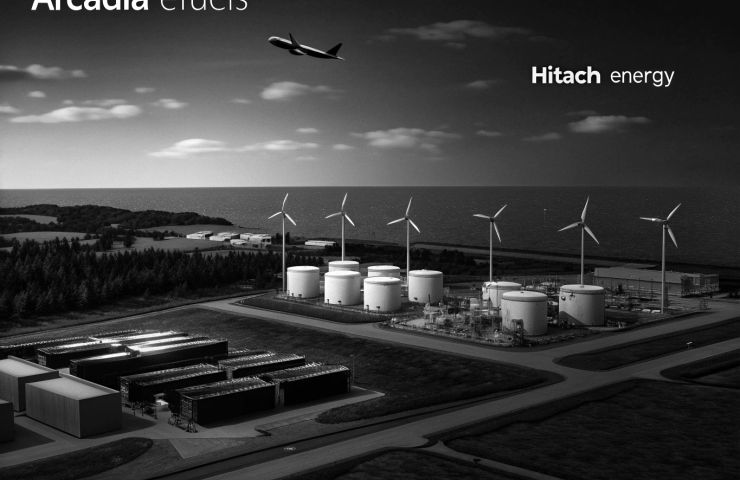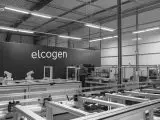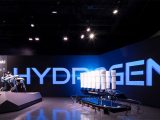
eSAF Production Powers Up in Denmark: Arcadia eFuels & Hitachi Energy’s Game-Changing Partnership
October 7, 2025I can’t wait to tell you that Arcadia eFuels just inked a definitive agreement with Hitachi Energy to deliver the full electrical infrastructure for a flagship eSAF production plant in Vordingborg, Denmark. We’re talking about a plant powered entirely by renewables, running 240 MW of green hydrogen electrolysis, and pumping out around 80,000 tonnes of drop-in sustainable aviation fuel each year. That scale absolutely kicks aviation’s stubborn carbon footprint to the curb. The secret sauce? A rock-solid electrical backbone—grid connections, smart system engineering, and battery storage—all provided by Hitachi Energy. Let’s dive into why this partnership matters and what it spells for the future of flight.
A Big Splash for Sustainable Aviation Fuel
Here’s the scoop: the Vordingborg plant runs 240 MW of electrolyzers on nothing but renewable juice to split water into hydrogen. That H₂ then teams up with captured CO₂ to churn out about 80,000 tonnes of drop-in sustainable aviation fuel every year—effectively replacing fossil jet kerosene. With Hitachi Energy handling grid tie-ins, power electronics, and system design, the project dodges over 260,000 tonnes of CO₂ emissions annually—that’s like removing 55,000 cars from the road. The kicker? It’s happening at full industrial scale, proving that sustainable aviation fuel isn’t just a lab novelty but a commercial powerhouse.
A Legacy of Renewable Leadership
Denmark’s green-energy journey kicked off decades ago, back when offshore wind was still a bold experiment. Fast-forward to today, and coastal towns like Vordingborg—famous for its medieval castle and seafaring heritage—are front and center in pilot projects for hydrogen and eFuels. With a robust grid, established wind and solar farms, and supportive policies, the region has become a hotbed for innovation. By choosing Vordingborg, Arcadia eFuels taps into local know-how, streamlined permitting, and existing logistics, turning historic roots into a modern renewable-energy hub.
The Secret Sauce: Green Hydrogen and Electrolysis
Green hydrogen is the linchpin of this venture. Using 100% renewable electricity, water electrolysis splits H₂O into hydrogen and oxygen—no carbon in sight. Hitachi Energy brings precision grid integration and intelligent control systems to the table, keeping voltage and frequency rock-steady and squeezing maximum performance out of the electrolyzers. It’s a real-world solution that goes well beyond lab-scale promise. By locking in renewable supply and bulletproof power management, the facility sidesteps fossil dependencies and guarantees a fully traceable, carbon-free hydrogen feedstock.
Battery Storage Keeps the Show Running
Electrolysis hates surprises, especially when renewable output fluctuates. That’s where the Battery Energy Storage System (BESS) comes in. Whenever wind or solar generation overshoots, the batteries soak up the extra juice; when the breeze dies down or the sun hides, they kick back in to keep the electrolyzers humming. This seamless buffering avoids production hiccups and eases stress on the grid—think of it as a giant, rechargeable safety net. Hitachi Energy’s BESS design, complete with safety controls and lightning-fast response times, ensures the plant can weather any power swings without breaking a sweat.
Built for the Future in Vordingborg
Vordingborg’s coastal port is a major plus—easy access to shipping lanes makes it simple to bring in captured CO₂ and ship out finished eSAF. The local workforce, with its maritime and industrial chops, is perfectly suited for this cutting-edge facility. On the policy side, Denmark’s carbon pricing and incentives for green hydrogen and eFuels give the project a financial tailwind, while EU mandates push airlines to blend sustainable fuels into their mix. When you line up geography, policy, and talent, you get a runway that’s primed for large-scale eSAF production.
Beyond the Plant: Collateral Benefits
The ripple effects go well past jet tanks. Construction and ongoing operations mean new jobs in engineering, maintenance, and logistics. Local suppliers and service firms will see a boost too, lifting the regional economy. Denmark’s green-innovation rep gets another notch, making it even more attractive to investors eyeing renewables and hydrogen. On a broader scale, cranking out 80,000 tonnes of eSAF each year moves the needle on EU transport-emissions targets—and that’s a win for everyone.
Challenges on the Runway
No project this ambitious comes without its hurdles. Cheap, renewable electricity has to stay plentiful; Denmark’s grid will need to get even greener to avoid price spikes. Capturing and certifying CO₂—whether from biogenic sources or direct-air capture—involves tricky logistics and tight regulations. Airlines will want to see proof that eSAF measures up to conventional jet fuel on cost, availability, and performance. Policy frameworks around eFuels are still finding their feet, and fierce competition for green electrons could drive up operating costs. That said, by teaming up early with grid and storage experts like Hitachi Energy, Arcadia eFuels is tackling these challenges head-on.
Setting the Precedent for Global Rollout
If Vordingborg really takes off, it could become the blueprint for eSAF hubs everywhere. The mix of large-scale electrolysis, advanced grid integration, and battery buffering is a recipe any region with ample renewables could follow—from Spain to Australia to California. The lessons learned on tech performance, regulatory navigation, and commercial partnerships will smash down barriers for future ventures. This project shows that hydrogen-based fuels can graduate from pilot plants to full-blown commercial operations.
Serious About Leading the Energy Transition
What really sets this collaboration apart is the shared vision. Arcadia eFuels is on a mission to decarbonize aviation, and Hitachi Energy brings deep expertise in electrification and energy storage. Together, they’re not just aiming for a pilot—they’re building a landmark. This endeavor sends a clear message to investors, policymakers, and airlines: the age of carbon-free flight is within reach. In the end, the Vordingborg eSAF production facility isn’t just a project; it’s a beacon for the future of sustainable aviation fuel. By delivering 80,000 tonnes of eSAF and cutting over 260,000 tonnes of CO₂ every year, it shows that industrial-scale decarbonization is not just possible—it’s happening now.



 With over 15 years of reporting hydrogen news, we are your premier source for the latest updates and insights in hydrogen and renewable energy.
With over 15 years of reporting hydrogen news, we are your premier source for the latest updates and insights in hydrogen and renewable energy.